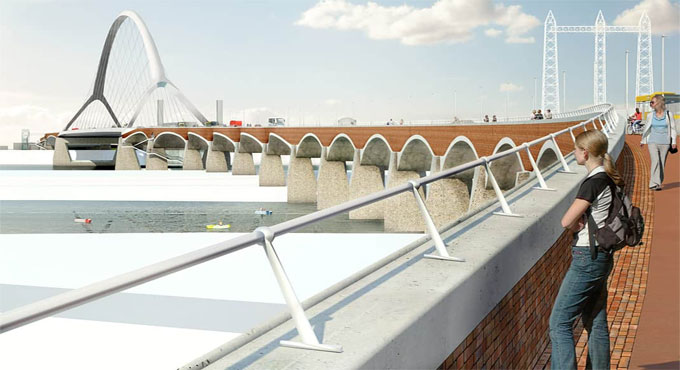
Benefits of piers constructed monolithically in bridge

When integral bridge, piers are constructed monolithically with the bridge deck, the following benefits are obtained :-
Bearing replacement cost is directly associated with the maintenance of bridges and it creates problem for the contractors. With integral bridge systems, it can be bypassed. In design standpoint, bearing replacement involves extra stresses and requirement of diaphragms in transverse design.
Movement of the bridge deck is obtained with the bending deformation of long and slender piers. Thus, it reduces the construction cost of bearings with the use of monolithic construction among bridge deck and piers.
Besides, it is less important to give extra effort to create design for drainage details and get bearing replacement. Alternatively, in maintenance perspective considerable cost and time savings can be gained with integrated bridge construction rather than applying bearings as bridge articulation.
Monolithic construction comprises of the shortest useful Euler buckling length for piers since they provide fixed supports at the interface among bridge deck and piers.
Other Factors: In two span integral bridges, temperature, creep and shrinkage, and other loads that provide longitudinal forces like seismic forces which create crucial design challenges.
These forces produce supplementary moments on the central pier increasing the demand. It requires innovative solutions in the design, ranging from implementation of arch systems to facilitate the bridge to breath up and down because of thermal actions. Unsettled soil conditions and seismic zones create the design challenges. Integrated Bridge design is an expert area in the design of bridges.
Note: In monolithic construction the piers are attached with the bridge decks irrespective of any joints and bearings.


